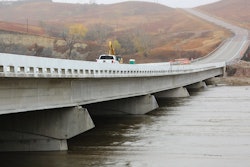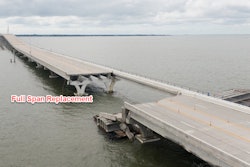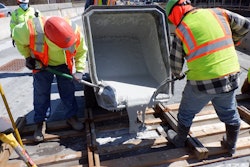Both Republicans and Democrats tout the virtues of infrastructure investment, but progress stalls when it comes to how to pay for it.
Norman Anderson, CEO of CG/LA Infrastructure, believes he has the answers to move the country beyond its current stalemate over gas tax increases and government funding obstacles, such as a $27 trillion national debt.
 Norman Anderson
Norman AndersonAlmost equal to the country’s debt is the amount of money in pension funds. If 10 percent of that amount could be invested in infrastructure projects, it would go a long way toward not only fixing America’s roads, bridges and other infrastructure but would also help boost the economy out of recession, he says. Anderson has advised President Donald Trump and worked in President Bill Clinton’s administration; his firm advises infrastructure project owners.
“We have $27 trillion in national debt. Nobody’s going to raise the gasoline tax. And if you raise the gasoline tax, it doesn’t matter, because people don’t drive as much,” Anderson says.
The only long-term capital currently available is from the pension fund system and life insurance funds, he says. That money needs safe investments to grow. But on average over the past 20 years, it has yielded about 2 percent, he says. Meanwhile, other countries’ pension funds have boosted infrastructure investment while also boosting their returns.
“If you look at how infrastructure gets invested in the Scandinavian countries or in places like Singapore or Hong Kong that have phenomenal infrastructure, it’s the pension fund guys who lead,” Anderson says. In Canada, for example, pension fund investment in infrastructure is at 16 percent while fund returns are averaging 8 percent a year, according to Anderson.
“You don’t have to be a Republican or a Democrat to want to have good bridges and 5G and clean water for people to drink and good electricity,” he says. “I talk to both groups all the time, plus people on Capitol Hill, Republicans and Democrats, and the message is:
“We need to dramatically increase our investment in infrastructure, probably double it.
“And we’ve got to bring a lot of investment from the pension fund sector into our infrastructure, because we’ve got too much national debt to rely on public budgets anymore.”
How to attract pension fund investment?
Attracting more private sector funding to public projects will require a shift in government attitude toward infrastructure, Anderson says.
“Right now, the public sector kind of acts like an ornery owner: ‘This is our stuff. And we’re going to take as long as we want to make whatever decisions we need to make,’” he says.
“That’s not how to think about modern infrastructure. The way to think about modern infrastructure is, this is a public good, and our job as the public sector is to optimize the public good.”
For example, taking nine or more years to review a project’s environmental permits is too long to hold private sector interest. He supports the Trump administration’s limiting reviews under the National Environmental Policy Act to two years.
Government would still fund infrastructure, but to get the increased funding needed from the private sector, it would have to act as a strategic manager. That would involve ensuring the private sector achieves its promised goals and prioritizing projects. It would also involve embracing technology to enhance current infrastructure.
As an example of technology’s use, he points to the Autonomy Institute in Austin, Texas, which wants to install 5G wireless infrastructure on the nation’s highway system. The installation would help spread broadband coverage but also generate revenue from 5G-equipped lanes for autonomous trucks.
Another attitude shift would need to occur in how the private sector is viewed. Private investment, he says, does not mean the public loses its rights to that public good.
“We’re the last country in the world that thinks that the public sector needs to fund public infrastructure,” he says. “…We have to break that idea that because the private sector is involved, it’s a private good. And you break that idea by admitting, by being clear about it, that’s our only option. So what we have to do is channel private investment.”
What next?
One immediate boost for infrastructure could come from the CARES Act passed by Congress in March to provide economic relief during the pandemic. About $600 billion is still available that could be used for state infrastructure-bank bonds, Anderson says. “That would double our level of investment for the next four or five years.”
His company has developed lists of $350 billion worth of infrastructure projects that are ranked by “performance,” which includes metrics such as jobs created, economic value, local benefit, sustainability and business generation. He touts smaller projects that can be finished quickly and produce value for communities and for the private sector.
He also notes that the economic effects of locally based infrastructure projects spread throughout the country. The Gateway rail line project between New York City and Newark, New Jersey, would create jobs valued at seven times the initial $29 billion cost over the project’s life, he says. Those jobs would occur in 25 percent of the 435 U.S. congressional districts, where materials and goods for the project would be produced.
With the current economic slowdown, Anderson believes such investments are needed more than ever, especially in the next few years as state revenues are expected to continue to decline. That decline will lead to less infrastructure investment and hurt the broader economy.
“It’s the knock-on effect that’s going to be horrible for the infrastructure community unless we make this happen as soon as possible,” he says.
“As goes the infrastructure community, so goes the health of the U.S. economy – period.”













